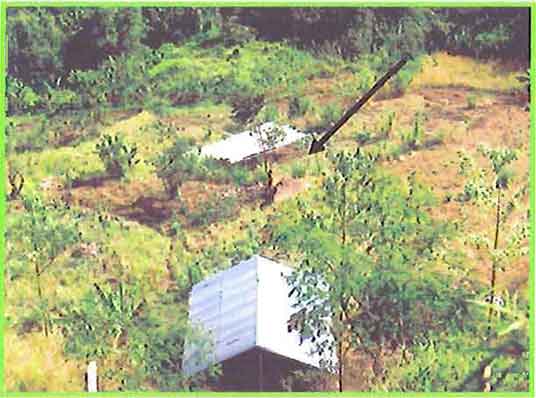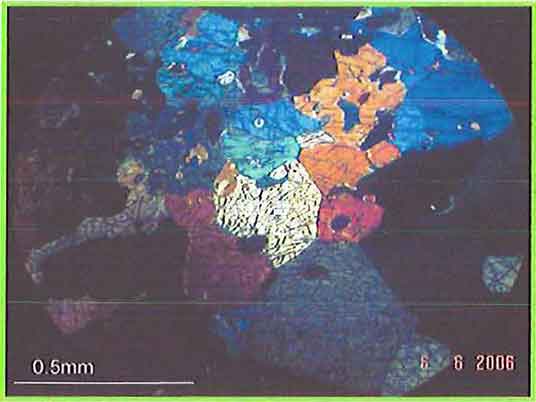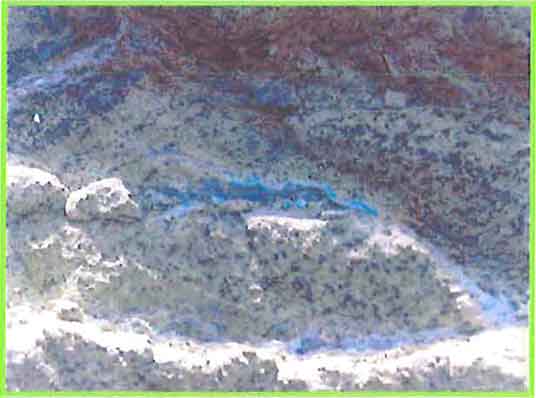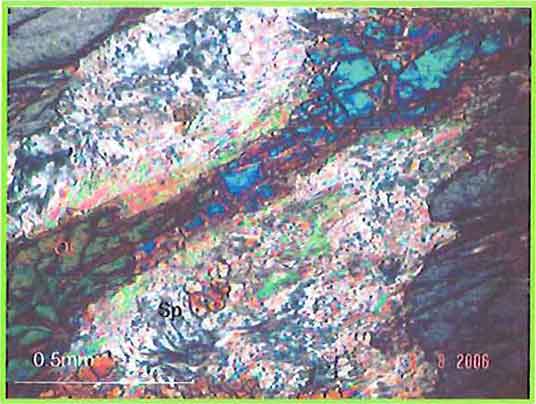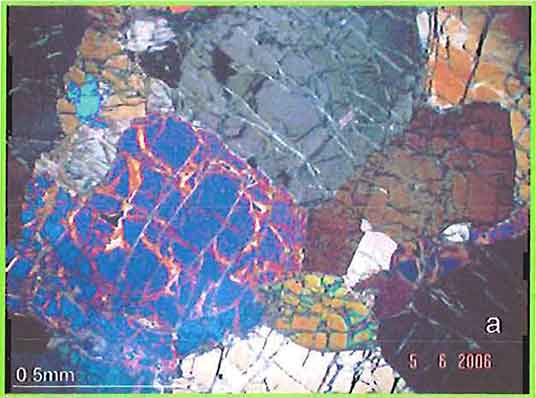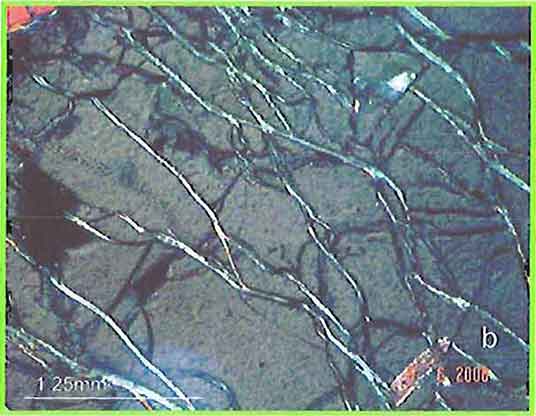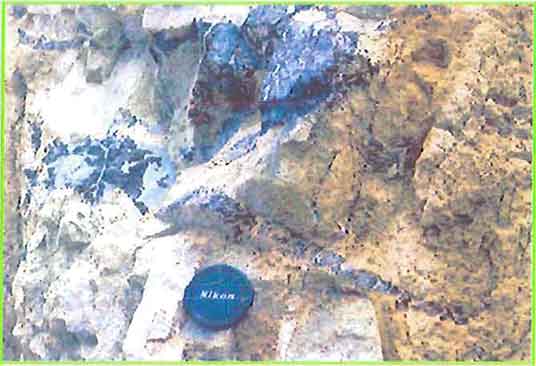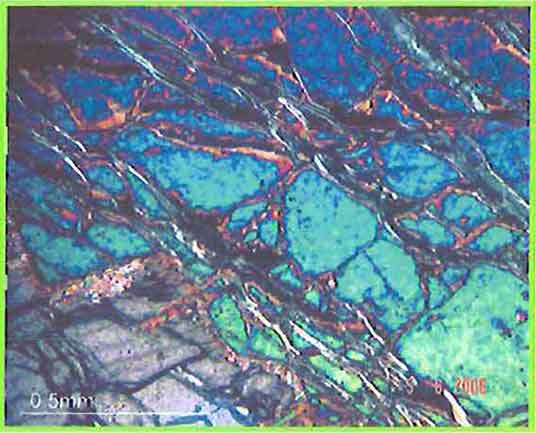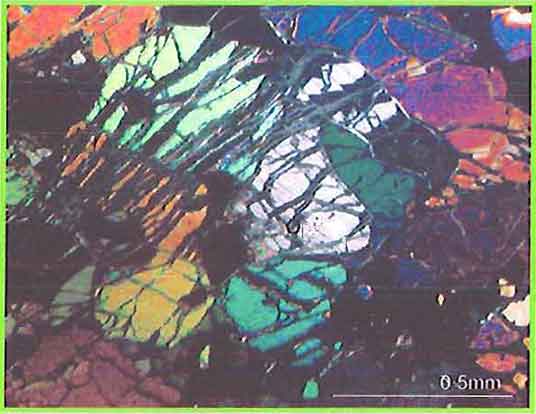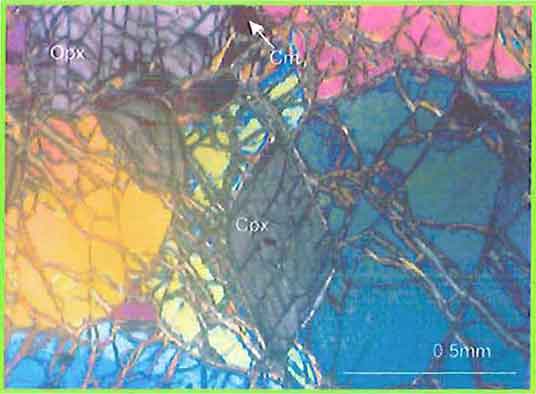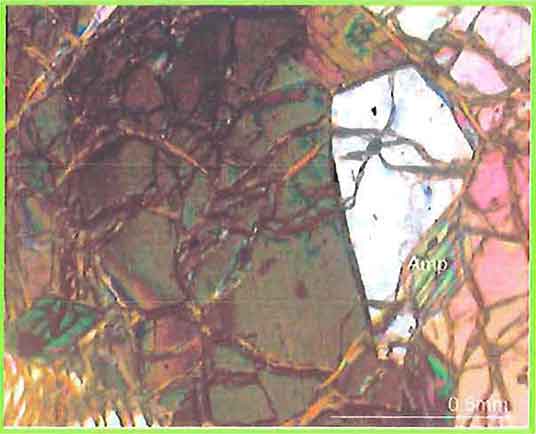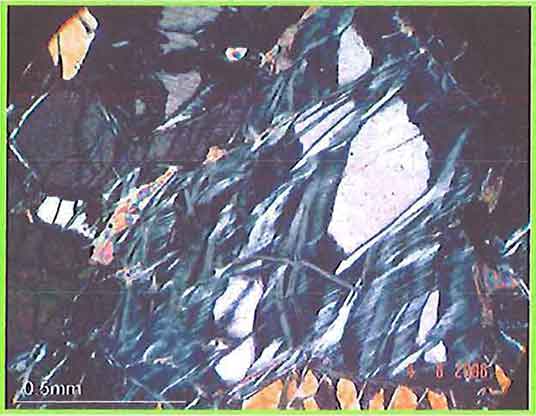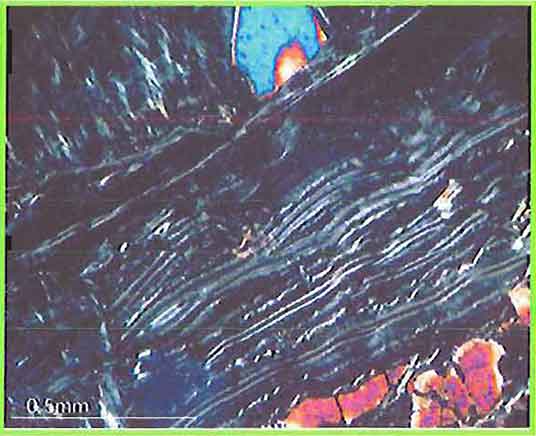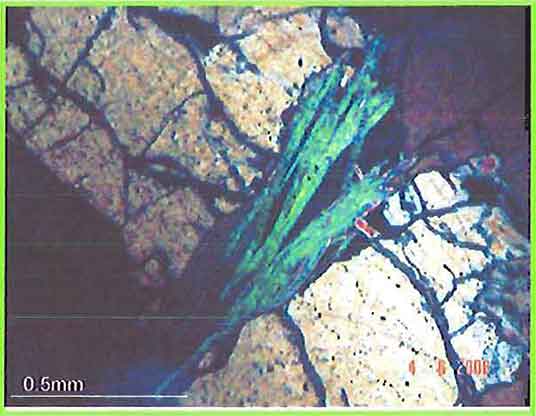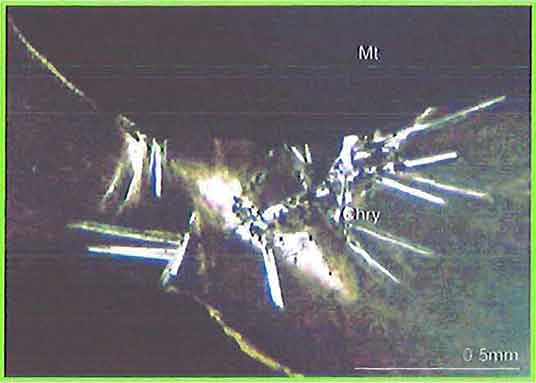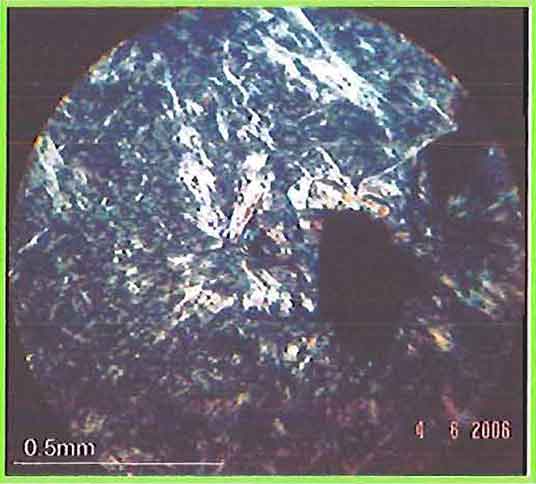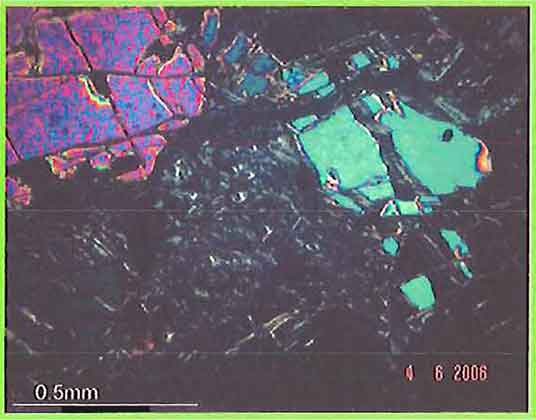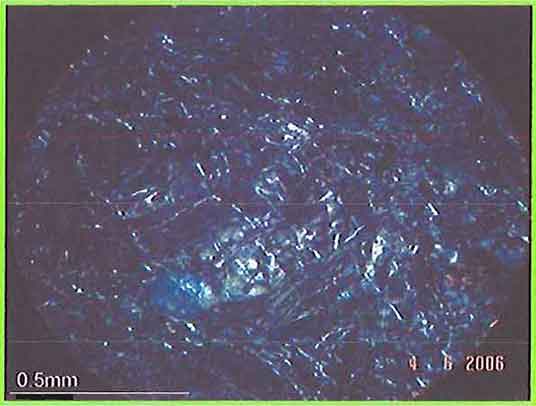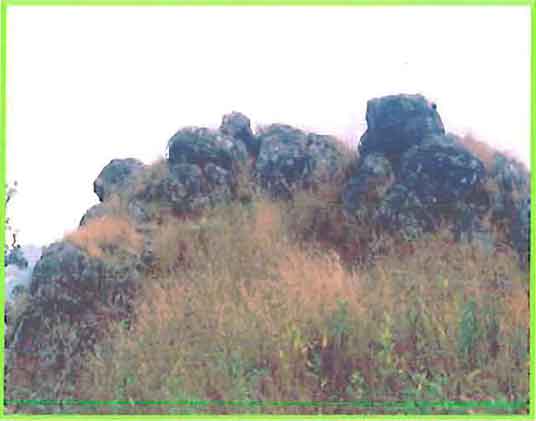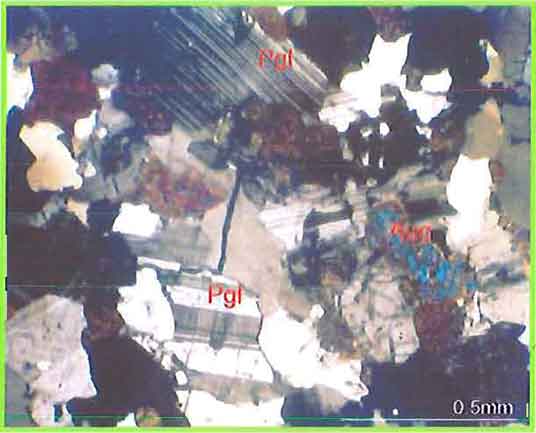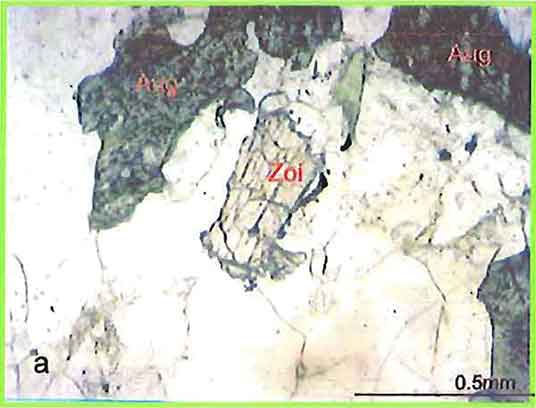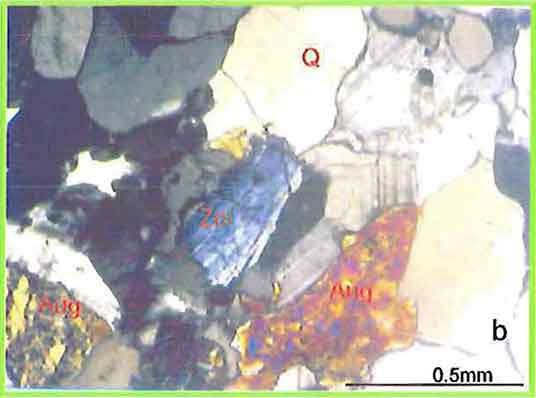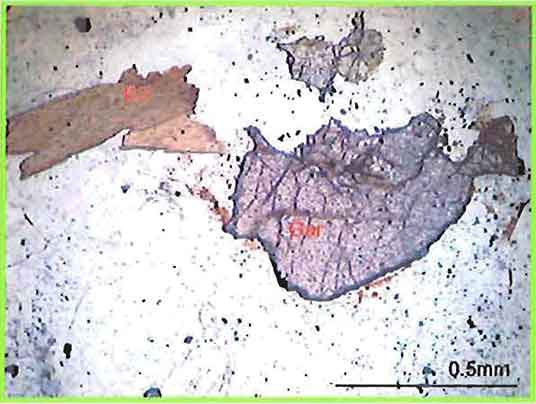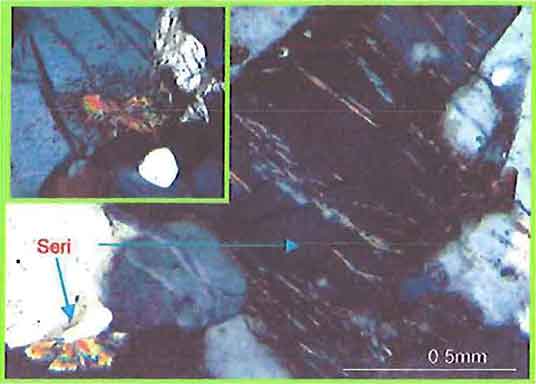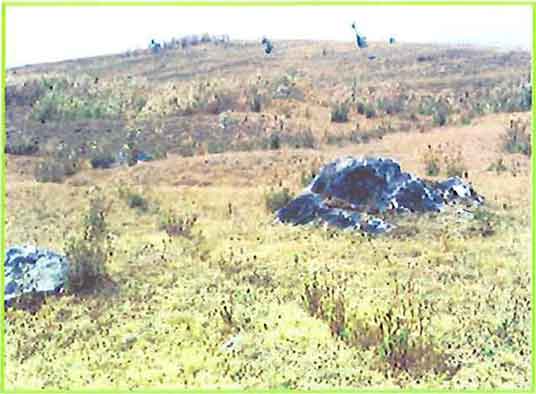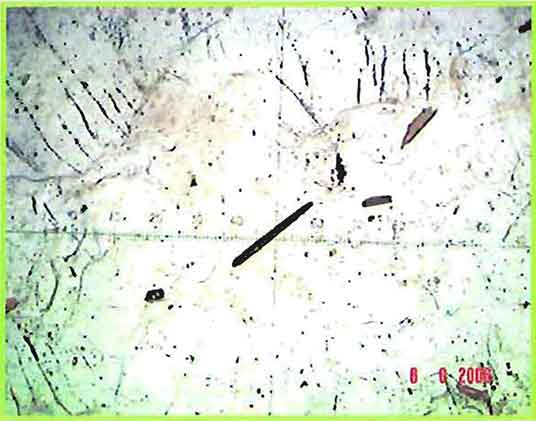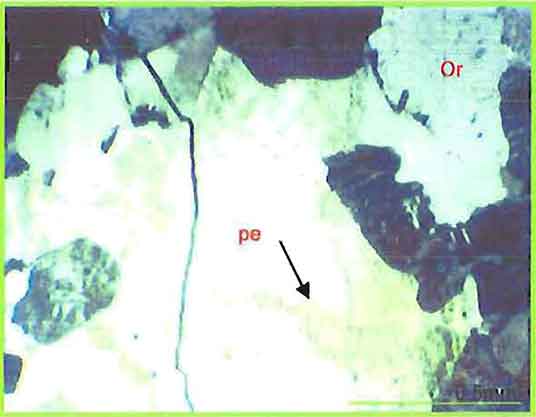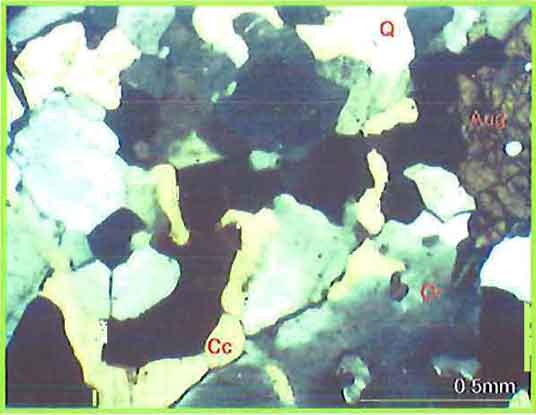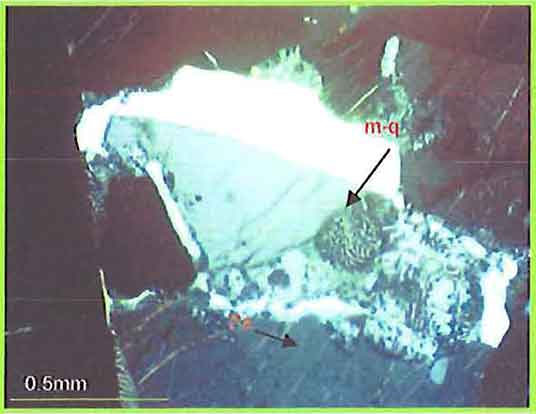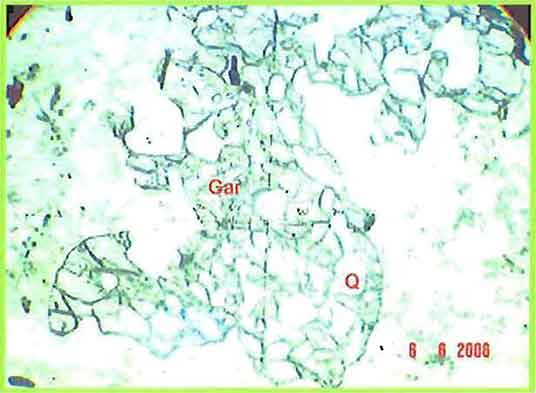![]()
Chapter III Part 1
The Igneous Rocks of the Mogok Stone Tract
A Ph.D. Dissertation by Kyaw Thu
Department of Geology, University of Yangon, Myanmar
Copyright © Kyaw Thu, 2007
Introduction from Bill Larson, Pala International
Kyaw Thu is a FGA gemologist with a Ph.D. in Geology. Pala International knows him from trips in the mid-1990s as one of the most interesting young gem enthusiasts, among so many wonderful students and collectors we met. Both Will and Bill Larson consider him a special and close friend. He has helped answer many questions regarding locality information for Brendan Laurs of GIA as well as meeting in person Dr. George Harlow of the American Museum of Natural History and corresponding with him for almost a decade. He has opened a gem laboratory and has applied to GIA to further his education. I was given a copy of his PhD thesis last month and Dr. Harlow made it available by scan for interested parties. Pala International is honored to share this with our readers.
Contents
See complete table of contents here.
Chapter III Petrography
3.1 Ultramafic and Mafic Rocks
3.2 Augite-biotite Granite
3.3 Leucogranite
3.4 Syenitic Rocks
3.5 Urtite Series
3.6 Kabaing Granite
3.7 Pegmatites and Aplites
References
List of Figures (images from Pala International are not listed)XN = crossed Nicols (explained here); PPL = plane polarized light (explained here) |
|
| 3.1 | Small exposure of gabbro rock in Htan-saing, north of Bernard-myo, 22° 00' 25.6" N, 96° 25' 54.7" E |
| 3.2 | Mineral composition of the gabbro rock, XN, 10 X |
| 3.3 | Chrysoprase vein in dunite exposure, Mya-sein Taung UMEHL mine |
| 3.4 | Olivine (Ol) altered to serpentine (Sp) in dunite, XN, 25 X |
| 3.5 | (a) Photomicrograph showing mesh-like serpentine in olivine of dunite, XN, 10 X |
| (b) Close-up view of serpentine in photo (a), XN, 25 X | |
| 3.6 | Photograph showing magnetite veins in peridotite outcrop at Pyaung-gaung, 22° 58' 16" N, 96° 33' 11" E |
| 3.7 | Olivine with chrysotile veinlets across the olivine in peridotite, XN, 10 X |
| 3.8 | Orthopyroxene (Opx) in peridotite, XN, 10 X |
| 3.9 | Olivine with chrysotile veins, orthopyroxene (Opx), clinopyroxene (Cpx) and anhedral chromite grain (Cm) in peridotite, XN, 25 X |
| 3.10 | Olivine with chrysotile veinlets across the olivine and amphibole (Amp) crystal in peridotite, XN, 25 X |
| 3.11 | Flaky serpentine (antigorite) in peridotite, XN, 25 X |
| 3.12 | Chrysotile occurs as cross fiber veinlets in peridotite, XN, 25 X |
| 3.13 | Mica flake in olivine grain, in peridotite, XN, 25 X |
| 3.14 | Antigorite crystals in chrysoprase (Chry) vein with magnetite, XN, 25 X |
| 3.15 | Radial chalcedony and magnetite grain in chrysoprase, XN, 25 X |
| 3.16 | Mesh-like serpentine and relic of olivine grains in serpentinized dunite, XN, 25 X |
| 3.17 | Mesh-like structure of serpentine minerals in serpentinite at Mya-sein-Taung, XN, 25 X |
| 3.18 | Photograph showing highly jointed nature in augite-biotite granite at the peak of Taung-me Taung 22° 58' 18.4" N, 96° 28' 8.5" E |
| 3.19 | Twinned plagioclase (Pgl), augite (Aug) and quartz grains in augite-biotite granite, Taung-me Taung; between XN, 10 X |
| 3.20 | Subhedral zoisite (Zoi) crystal in augite (Aug)-biotite granite, Shwe-u-daung Taung; (a) P.P.L. (b) XN, 25 X |
| 3.21 | Anhedral garnet (Gar) grain and biotite (Bio) flakes in augite-biotite granite, Pan-yaung, P.P.L., 10 X |
| 3.22 | Sericitization occurs along the cleavage planes and fan shape sericite (Seri) in border of k-feldspar, XN, 25 X |
| 3.23 | Photograph showing hillock nature of marble unit in leucogranite body, NE of Dattaw Taung, 22° 57' 56.2" N, 96° 32' 29" E |
| 3.24 | Painite crystal in k-feldspar, near the contact of leucogranite and marble, Wet-loo, PPL, 25 X |
| 3.25 | K-feldspar with string perthitic texture (pe) in leucogranite, XN, 10 X |
| 3.26 | Interstitial calcite (Cc) grains among k-feldspar (Or) and quartz (Q) with augite (Aug), near contact of marble unit, XN, 10 X |
| 3.27 | K-feldspar with string perthite (pe) with myrmekitic (m-q) intergrowth of plagioclase feldspar and quartz, Htin-shu Taung, XN, 25 X |
| 3.28 | Anhedral garnet (Gar) grain with quartz (Q) inclusions in leucogranite, Hin-thar Taung, P.P.L., 10 X |
| Figures continue in Chapter III, Part 2 | |
Chapter III Petrography – Part 1
3.1 Ultramafic and Mafic Rocks
The intrusive body of mafic and ultramafic rocks of the area are:
- Ultramafic rocks: peridotite, dunite, serpentinite, and rarely, amphibolite and micaite
- Mafic rock: gabbro
Today a motor road leads from Mandalay north to Sagyin, past several villages and leads eastward, up a ridge about 1220 m, then descends to the beautiful green valley, namely Mogok Valley.
- Ultramafic Rocks
According to IUGS classification, calculated modal composition of ultramafic rocks from the Bernard-myo–Pyaung-gaung area fall in dunite, harzburgite, pyroxene peridotite and hornblende peridotite fields.
Dunite
Megascopic Study
It is found as the main ultramafic rock in the study area. It is essentially composed of olivine, and small amount of pyroxene and black opaque mineral (chromite) as accessory. It shows sugary texture, due to the atomic structure of olivine minerals. On the fresh surface, it shows olive green colour to yellowish green colour and sometimes it shows greenish brown colour. Small veinlets of chrysotile are also observed in some exposure of Mya-sein Taung. On the weathered surface, it shows yellow, greyish blue to purplish grey colour. It is more or less serpentinized and sometime gem quality olivine grains are found as porphyritic type.
Microscopic Study
The rock is medium to coarse-grained, allotriomorphic granular texture. Its grain size ranging from 0.5 to 3 mm in diameter. It is holocrystalline rock principally composed of olivine, about 95% of the total volume and accessory enstatite, biotite and chromite. Olivine shows equigranular xenomorphic texture and sometimes with mesh-like serpentine forming mesh centre and mesh rims. It shows tiny veinlets of serpentine, mostly fibrous and some [with] flake-like nature, chrysotile and antigorite, which is derived from the olivine due to the autometamorphism. Grade of serpentinization is medium and veins appears as networks.
Enstatite occurs as subhedral to anhedral grains with typical pyroxene cleavage. It shows brownish to yellowish brown colour, which is cut across by serpentine. Black opaque (chromite) minerals occur as subhedral shape showing square, rectangular, rhomb, platy, triangular, elongated and irregular forms and they intruded with the olivine grains.
Peridotite
Megascopic Study
It shows darker colour than dunite, mainly found at Mya-sein Taung and Zalat Taung. It shows medium to coarse-grained granular texture. On fresh surface it is found as yellowish brown, dark green to green colour with grain size variation from place to place. It is more or less serpentinized and shows the colour variation depending upon the constituent minerals. On the weathered part, relics of olivine, pyroxene and serpentine minerals can be observed. It is mainly composed of olivine and orthopyroxene, and black opaque mineral as accessory. Also it contains minor amount of clinopyroxene and a little amphibole and biotite. Some peridotite exposures are criss-crossed by small magnetite vein in Mya-sein Taung UMEHL mine.
Microscopic Study
This rock shows xenomorphic granular grain of olivine, orthopyroxene, biotite and black opaque mineral. Olivine made up about the 70% of the total volume, anhedral grain size ranges from 0.5 mm to 3 mm, and orthopyroxene found as 15%. Clinopyroxene of about 8% are also observed as minor accessory together with about 3% of amphibole. Chromite also found as accessory mineral up to 4%, and yellow-brown phlogopite (Mg-mica) and talc are noted. Olivine shows subhedral grain and moderately to highly serpentinized. Serpentinization started along the irregular cracks of olivine forming veins and veinlets.
Serpentine occurs as fibrous and flaky nature in olivine grains and mostly are antigorite. Enstatite shows subhedral to anhedral grains, showing parallel extinction under crossed polar. Yellowish, brownish yellow and greyish brown colours are observed. Clinopyroxene shows subhedral crystals with inclined extinction; it is found between the olivine grains, which is also surrounded by the vein and veinlets of antigorite. Amphibole shows greenish, euhedral to subhedral crystal with typical amphibole cleavage and lower extinction angle than pyroxene crystal, often serpentinized at its border. Grain size range from 0.1 mm to 1 mm. Chromite is opaque, black, anhedral to subhedral; grain size ranges from 0.05 mm to 0.1 mm; it is found as inclusions in olivine grains as well as in green amphibole.
Serpentinite
Megascopic Study
It occurs as higher degree of serpentinized peridotite and serpentinized dunite. It is found at the outer part of the body, soft and fibrous with silky luster and soapy appearance. It is mainly found in Mya-sein Taung, near Pyaung-gaung and Zalat Taung, northeast of Pyaung-gaung.
This rock is light green to dark green in colour. It occurs as fibrous nature and soft, silky to vitreous luster with smooth and soapy feeling are observed on the surface. Sometimes serpentinite shows parallel striation or grooves on the surfaces in this area. It is found at or near the contact of country rock and ultramafic intrusive, also along the joint sets and fracture planes within the main intrusive body.
Microscopic Study
It is highly to completely serpentinized nature and mesh-like structure is conspicuous. Serpentine as an essential mineral contains 70–80% (chrysotile, lizardite, antigorite, etc.) whereas olivine has an amount of 10–20% of total volume. The rest of portion is made up of chromite and magnetite. It usually shows veins and veinlets with asbestos form and forming mesh-like structure. Anhedral olivine and serpentinized olivine are partially intergrowth with large crystals of chromite, giving poikilitic texture in some of the serpentinite.
- Mafic Rock
Gabbro
These rocks, mainly gabbro-like rocks, occur in small lenticular bodies, mainly observed at the Kyauk-pyat-that, Ye-aye environs and Tam-saing, north-west of Bernard-myo, which are limited exposed and not always large enough to be mapped. It is medium to coarse-grained, holocrystalline hypidiomorphic granular texture. This rock is composed of mostly brown hornblende, clinopyroxene (mainly augite), with subordinate amount of biotite, interstitial basic plagioclase, calcite and iron ore. Plagioclase occurs as subhedral grain and some are altered to sericite along the fracture. Brown hornblende shows anhedral to subhedral crystal with amphibole cleavage. Pyroxene (titan augite) shows light purplish colour in PPL and some are altered to hornblende.
3.2 Augite-biotite Granite
Megascopic Study
It is medium to coarse-grained, dark grey in colour and reddish brown on weathered surface and well foliation is pronounced on their exposures, and nearly vertical joint sets are also observed. This rock is composed of potash feldspar, quartz, subordinate plagioclase and a little pyroxene altered to biotite and hornblende. Iron ore, apatite, garnet and sphene form the accessories.
Microscopic Study
The augite-biotite granite forms an intermediate stage in the formation of the syenites, a phenomena, which has been observed in several parts of the world. They are more acid than syenite. The rocks show medium to coarse-grained hypidiomorphic granular texture. Some sections reveal foliated nature. Potash feldspars (orthoclase) are generally simple twin, but some are untwinned, and most abundant with cryptoperthite to microperthite are conspicuous under the microscope. It suggests the temperature of formation that has fallen down below 66°C. Perthite were developed as orthoclase accepted more sodic ions in solid solution at a lower temperature and subsequently cooled slowly. Plagioclase shows polysynthetic twinning (albite twin) and the extinction angle range from 16 to 20, the composition is between An25–An35, oligoclase-andesine range by using Michel-Levy’s method. Sericitization is observed along the fracture and cleavage of alkali-feldspars.
Quartz, anhedral grained, content are seen to be a little lower than feldspar content and varies in place to place. Myrmekitic texture is observed at the quartz-feldspar junction. The prominent ferromagnesian mineral is pyroxene, mainly augite.
Light brown colour in PPL and shows moderate paleochroism and extinction angle varies from 37 to 42. In some section, light purplish brown (titan augite) with strong pleochroism are observed. Some augite are altered to hornblende. Biotites are subhedral in form and some are partly altered to chlorite. Some biotite flakes are altered to chlorite and garnet with minute inclusions of quartz and zircon. The accessory mineral includes zircon, sphene, apatite and iron ore (magnetite). Zoisite contains a pale green, subhedral, with weak pleochroism, straight extinction with upper first-order blue, often associated with magnetite in some section is also observed. Graphite crystals are flaky or tabular, disseminated throughout the host substance.
Mineral assemblages are:
- Alkalifeldspar+biotite+hornblende+augite+plagioclase+zoisite
- Alkalifeldspar+plagioclase+quartz+biotite+augite+graphite+hornblende
- Alkalifeldspar+plagioclase+quartz+biotite+titanaugite+graphite+hornblende
- Alkalifeldspar+plagioclase+quartz+biotite+augite+graphite+zoisite+hornblende
3.3 Leucogranite
Megascopic Study
It is coarse-grained and essentially composed of felsic minerals such as feldspar and quartz. Mafic minerals are present in small amounts or sometimes absent, but in some places very small amount of biotite, garnet grains and iron ore are present. It is highly weathered (kaolinized) in almost every exposure. It is whitish or yellowish white colour on fresh surface and yellowish brown colour on weathered surface. Feldspar and quartz are characterized as graphic intergrowth in some places. Feldspar are mostly weathered, but some exhibit a moonstone schiller on fresh surface. Grain size varies from one place to another. Small amount of radioactive minerals (uranium ore) are found in leucogranite at On-dan and Mogok area.
Microscopic Study
This rock exhibits coarse-grained, non porphyritic, allotriomorphic granular texture. It is mainly composed of quartz, orthoclase, perthitic orthoclase, plagioclase and a subordinate amount of biotite, garnet and iron ore. Quartz is composed of about 30–40% of the total volume and some shows a dusty appearance due to deformation to which the rocks have been subjected. It is anhedral, intergrown with plagioclase; myrmekitic intergrowths are also found enclosed in the alkali feldspar.
Feldspar contains 60–70% of the total volume. Both alkali and plagioclase feldspars are observed and are frequently sericitized and kaolinized. Plagioclase is subhedral, often showing polysynthetic lamellar twinning with close-spaced bands. Cryptoperthite are observed in orthoclase and showing string and patch perthites. Spessartite is light brown, irregularly fractured with porphyritic texture and shows high relief in PPL. Hornblende is subhedral to anhedral, dark green, distinctly dichroic. Biotite is subhedral, brown, shows curved cleavage planes, often partially altered to chlorite. Small zircon occurs as inclusions in grains of quartz and feldspar. Other accessory minerals are sphene, apatite, tourmaline and magnetite.
Noteworthy is that, near the contact with metamorphic rocks (marble units), calcite grains are enclosed between the quartz and alkali feldspar grains in interstitial nature. Also, small painite and corundum crystals are observed in some sections of contact zone between leucogranite and marble of Wet-loo and Thurein Taung area.
Continued in Chapter III – Part 2.
References
Adams, E.D., 1926. A visit to the gem districts of Ceylon and Burma. Bull. Can. Inst. Min. Met. v. 166, pp. 213–246.
Barley, M.E, A.L. Pickard, Khin Zaw, P. Rak and M.G. Doyle, 2003. Jurassic to Miocene magmatism and metamorphism in the Mogok metamorphic belt and the Indian-Eurasia collision in Myanmar. Tectonics, v.22, no.3, pp. 1–11.
Bender, F. 1983. Geology of Burma. Gebruder Borntraeger, Berlin, 293 pp.
Bertrand, G, C. Rangin, H. Maluski, Tin Aung Han, Myint Thein, Ohn Myint, Win Maw and San Lwin, 1999. Cenozoic metamorphism along the Shan scarp (Myanmar): evidences for ductile shear along the Sagaing fault or the northward migration of the eastern Himalayan syntaxis. Geophysical Research Letters, v. 26, pp. 915–918.
Bertrand, G., C. Rangin, H. Mluski, H. Bellon and GIAC Scientific Party, 2001. Diachronous cooling along the Mogok Metamorphic Belt (Shan scarp, Myanmar): the trace of the northward migration of the Indian syntaxis. Journal of Asian Earth Sciences, v.19, pp. 649–659.
Brown, C.B. and J.W. Judd, 1896. The rubies of Burma and associated minerals; their mode of occurrence, origin and metamorphoses: a contribution to the history of corundum. Philosophical Transaction of the Royal Society of London. Series A, v. 187, pp. 151–228.
Brook, M., and N.J. Snelling, 1976. K/Ar and Rb/Sr age determinations on rocks and minerals from Burma. Inst. Geol. Sci., London, Isotope Geol. Unit Report 76/12, p.20.
Buddington, A.F., 1959. Granite emplacement with special reference to North America, Geol. Soc. Am. Bull., v. 70. pp. 671–747.
Cerny, P., 1991. Rare-element granitic pegmatite: regional to global environments and petrogenesis. Geosci. Can., v. 18, pt. 2, pp. 68–81.
Chappell, B.W. and A.J.R. White, 1974. Two contrasting granite types. Pacific Geol., v. 8, pp. 173–174.
Clegg, E.L.G. 1941. The Cretaceous and associated rocks of Burma. Mem. Geol. Surv. India, v. 74, pt.1, 101 pp.
Cobbing, E.J., P.E.J. Pitfield, O.P.E. Darbyshire and D.J.J. Mallick, 1992. The granites of the South-East Asian tin belt. Overseas Memoir, British Geological Survey, London, no. 10, 369 pp.
Fermor. L.L., 1932. The Mogok Stone Tract, Katha District. Rec. Geol. Surv. India, v. 65, pt. 1, pp. 80–86.
Hatch, F.H, A.K. Wells and M.K. Wells, 1961. Petrology of the igneous rocks, Thomas Murby, London, 514 pp.
Heron. A. M., 1937, Age of Mogok series, Rec. Geol. Surv. India, v. 72, pt. 1, pp. 62–64.
Hla Kyi, T. Themelis and Kyaw Thu, 2005. The pegmatitic gem deposits of Molo (Momeik) and Sakhan-gyi (Mogok). The Australian Gemmologist, v. 22, no. 7, pp. 303–309.
Hutchison, C.S., 1975. The norm, its variations, their calculation and relationships. Sch. Min. Pet., Mitt., v. 55, pp. 243–256.
Hyndman, D.W, 1985. Petrology of igneous and metamorphic rocks. New York, McGraw-Hill. 2nd edt., 786 pp.
Irvine, T.N. and W.R.A. Barager, 1971. A guide to the chemical classification of the common volcanic rocks. Can. Jour. Earth Sci., v. 8, pp. 523–548.
Iyer, L.A.N., 1953. The geology and gemstones of the Mogok Stone Tract, Burma. Mem. Geol. Surv. India, v. 82, pp. 100.
Kerkvoort, G.V., 1995. Rare metal granitic pegmatites. Unpublished B.Sc. Hons. Thesis, University of Tasmania, Australia, 70 pp.
Khin Zaw, 1986. Geological, petrological, and geochemical characteristics of granitoid rocks in Burma: with special reference to the emplacement of W-Sn mineralisation and their global tectonic implications. Unpublished research paper.
Khin Zaw, 1998. Geological evolution of selected granitic pegmatites in Myanmar (Burma): constraints from regional setting, lithology, and fluid-inclusion studies. International Geology Review, v. 40, pp. 647–662.
La Touche, T.H.D., 1913. Geology of the northern Shan States. Mem. Geol. Surv. India, v. 39, pt. 2, 379 pp.
Maniar, P.D., and P.M. Piccoli, 1989. Tectonic discrimination of granitoids. Geol. Soc. Am. Bull., v. 101, pp. 635–643.
Marmo, A., 1956. On the emplacement of granites. Amer. Jour. of Sci., v. 254, pp. 479–492.
Maung Thein, 2000. Summary of the geological history of Myanmar. Unpublished paper, p.8.
Metcalfe, I., 1998. Origin and assembly of South-East Asia continental terranes. In: Audley Charles, M.G., Hallam, A. (Eds.), Gondwana and Tethys, Special publication Geological Society of London, v. 37, pp. 101–118.
Metcalfe, I., 2000. The Bentong-Raub suture zone. Journal of Southeast Asian Earth Sciences, v. 18, pp. 691–721.
Mitchell, A.H.G., 1977. Tectonic setting for emplacement of Southeast Asia Tin granites. Geological Society of London, v. 141, pp. 123–140.
Mitchell, A.H.G., 1992. Late Permian-Mesozoic events and the Mergui Group nappe in Myanmar and Thailand. Jour. of SE Asia Earth Sciences, v. 7, pp. 165–178.
Mitchell, A.H.G., 1993. Cretaceous-Cenzoic tectonic event in western Myanmar (Burma)—Assam region: Jour. of the Geol. Soc. London, v. 150, pp. 1089–1102.
Mitchell, A.H.G., C.A. Ausa, L. Deiparine, Tin Hlaing, Nyunt Htay and Aung Khine, 2004. The Modi Taung-Nankwe gold district, Slate Belt, central Myanmar: mesothermal veins in a Mesozoic orogen. Journal of Asian Earth Sciences, v. 23, pp. 231–341.
Mitchell, A.H.G., Myint Thein Htay, Kyaw Min Htun, Myint Naing Win, Thura Oo and Tin Hlaing, 2006. Rock relationships in the Mogok metamorphic belt, Tatkon to Mandalay, central Myanmar. Jour. of Asian Earth Sciences. doi:10.1016/j.jseaes.2006.05.009, pp.1–20.
Myint Lwin Thein, Ohn Myint, Sun Kyi and Phone Nyunt Win, 1990. Geology and stratigraphy of the metamorphosed Early Paleozoic rocks of the Mogok-Thabeikkyin-Singu-Madaya areas. Unpublished staff report, no. 98, A.G.D., Y.U., p.24.
O’Connor, J.T., 1965. Classification of quartz-rich igneous rocks based on feldspar ratios. U.S.G.S. Prof. Paper. 525B, pp. 79–84.
Piwinskii, and P.J. Wyllie, 1970. Experimental studies of igneous rock series: felsic body suite from the Neddle point pluton, Wallowa Batholith, Oregon. Jour. Geol. v. 78, pp. 52–76.
Ridd, M.F., 1971. South-East Asia as a part of Gondwana land. Nature, v. 234, pp. 531–533.
Rossman, G.R., Saw Naung Oo, G.E. Harlow and J. Hunt, 2005. A second source in Myanmar and metasomatic origins. Goldschmidt Conference Abstract, Geochemistry of Gem Deposits Sec., pp. 278–279.
Searle, D.L. and Ba Than Haq, 1964. The Mogok belt of Burma and its relationship to the Himalayan orogeny. in Int. Geol. Cong., Twenty-Second Sec., India, Himalayan and Alpine orogeny, Sec. 11, pp. 132–161.
Sein Myint, Than Naing and Soe Nyunt Swe, 1979. Satellite imagery interpretation of major lineaments in part of northeastern Burma. Contribution to Burmese Geology, v. 1, no. 1. pp. 20–25.
Smirnov, V.I., 1976. Geology of mineral deposits. MIR Publishers, Moscow, 520 pp.
Sutherland, F.L., D. Schwarrz, E.A. Jobbins, R.R. Coenraads and G. Webb, 1998. Distinctive gem corundum suites from discrete basalt fields: a comparative study of Barrington, Australia, and West Pailin, Cambodia gem fields. Journal of Gemmology, v. 26, pp. 65–85.
Sylvester, P. J., 1989. Post-collision alkaline granites. Jour. of Geol., v. 97, pp. 261–280.
Thet Tin Nyunt, 2000. Mineralogical and petrological studies of Bemard-Pyaunggaung area, Mogok Township, Mandalay Division. Unpublished M.Sc. Thesis, University of Yangon, 184 pp.
Thuzar Aung, 2003. Petrology and Gemstones of Ondan and its Environs, Mogok Township, Mandalay Division. Unpublished M.Res. Thesis, University of Yangon, 90 pp.
Tuttle, O. F., and N.L. Bowen, 1958. Origin of granite in the light of experimental studies in the system NaAISip8-KAISiP8-Si02-H20. In: Hyundman, D.W., 1985. Petrology of igneous and metamorphic rocks. New York, McGraw-Hill. 2nd edt., 786 pp.
United Nations, 1978. Geology and exploration geochemistry of the Shan scarps area, east of Kyaukse, Thazi and Tatkon, central Burma. Technical Report. UN/BUR 721002, no. 3, United Nations Development Programme, New York.
Washington, H.S., 1917; Chemical analyses of igneous rocks published from 1884 to 1913, inclusive. U.S. Geol. Survey Prof. Paper, no. 99, pp. 9–1201.
Wiebe, R.A., 1974. Differentiation in layered diorite intrusions, Ingonish, Nova Scotia. Jour. Geol., v. 82, pp. 731–750.
Williams. H., F.J. Turner and C.M. Gilbert, 1982. Petrography; an introduction of the study of rocks in thin section. 2nd ed. W.H. Freeman and Co., San Francisco, 626 pp.
Win Naing, 2001. Tertiary deformation patterns of the northeastern part of Myanmar: structural and microfabric evidences from the Mogok-Momeik area. Unpublished M.Res. Thesis, Dept. of Geol., University of Yangon 198 pp.
Wright, J.B., 1969. A simple alkalinity ratio and its application to questions of non-orogenic granite gneiss. Geol. Mag., v. 106, pp. 523–548.
